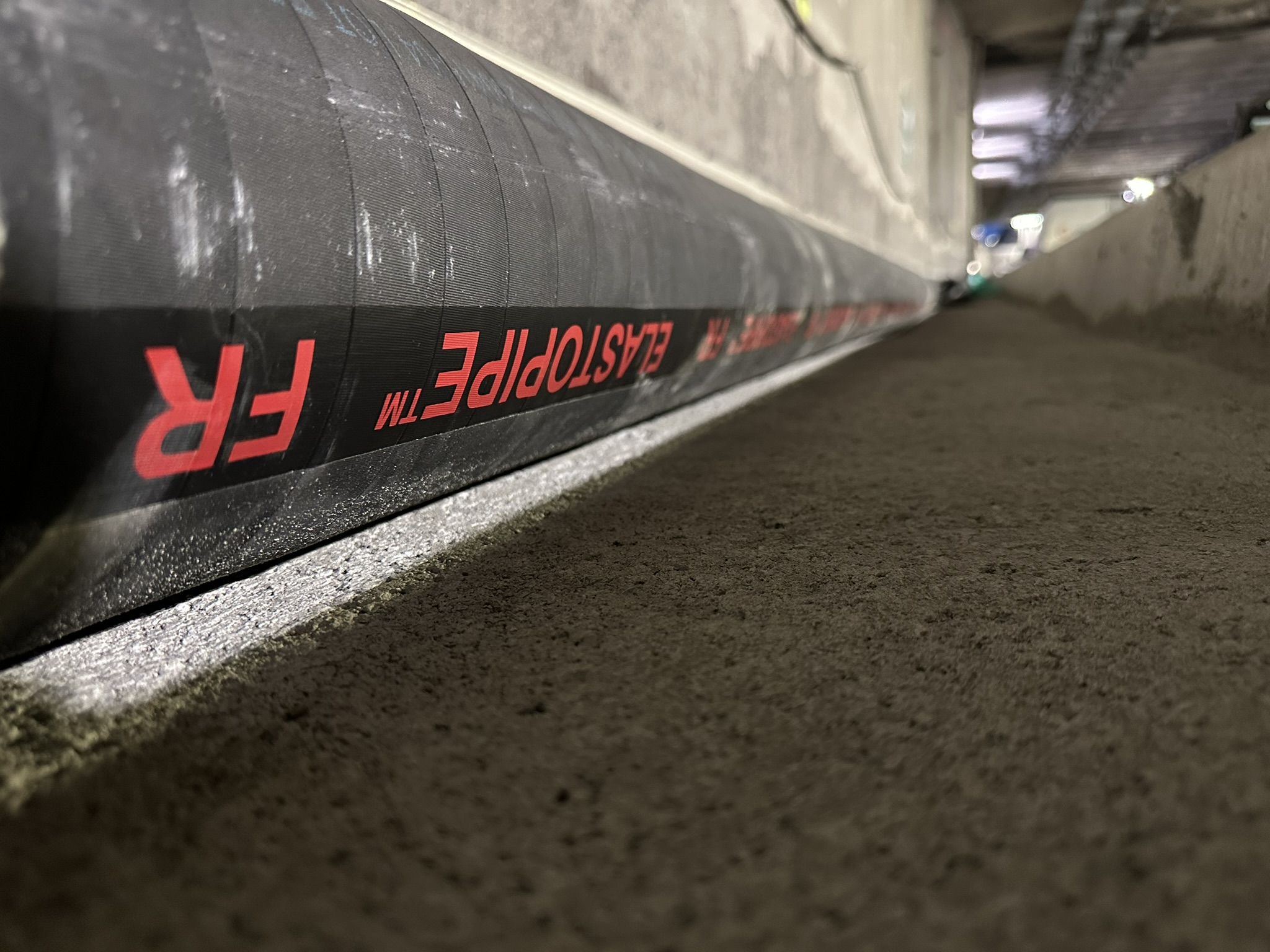CASE STUDY

Vipo’s first tunnel installation. Bringing offshore safety to urban infrastructure.
Why Elastopipe™
Vipo’s Elastopipe™ was chosen for its proven resilience,
flexibility, and track record in offshore firewater systems.
Traditionally used in oil & gas applications, Elastopipe’s
unique properties made it an ideal solution for this new
environment, showing once again that the technology
extends far beyond the energy sector.
Installation & Collaboration
Installation was led by Conduterra, who handled
procurement and engineering with excellent support from
Vipo. The process spanned three weeks, completed over 15
night shifts to minimize disruption. Around 350 meters of
Elastopipe were installed and later embedded into concrete.
This tunnel setup demanded quick and secure installation,
and the pipe’s modular, flexible design made it easy to route
around complex tunnel elements, showcasing its versatility
outside the offshore environment.
Long-Term Impact & Sustainability
A safe, efficient, and long-lasting firewater system is now
in place, ready to serve for many decades. More than
just a successful installation, this project highlights our
commitment to sustainability:
Our approach to Sustainability – When materials last,
resources go further.
Longevity is central to delivering sustainable value to our
customers, the solution that lasts is often the one with the
lowest impact over time. Whether exposed to high pressure,
corrosive elements, extreme heat, or severe cold, VIPO
materials are engineered for durability and operational
reliability.
Originally developed as a collaborative safety innovation
for the offshore oil and gas sector, Elastopipe™ ensures that
water flows even under explosive fire conditions. Bringing
this robust solution to the tunnel infrastructure sector, where
safety and integrity are critical, is a major step forward.
This project is also a strong example of how VIPO contributes
to UN Sustainable Development Goal #9, building resilient
infrastructure, promoting sustainable industrialization, and
fostering innovation.
What’s Next?
The next phase will be the installation in tunnel number
two, scheduled for December 2025. With each successful
implementation, we continue to shape
This is how we shape the future. One tunnel at a time.
